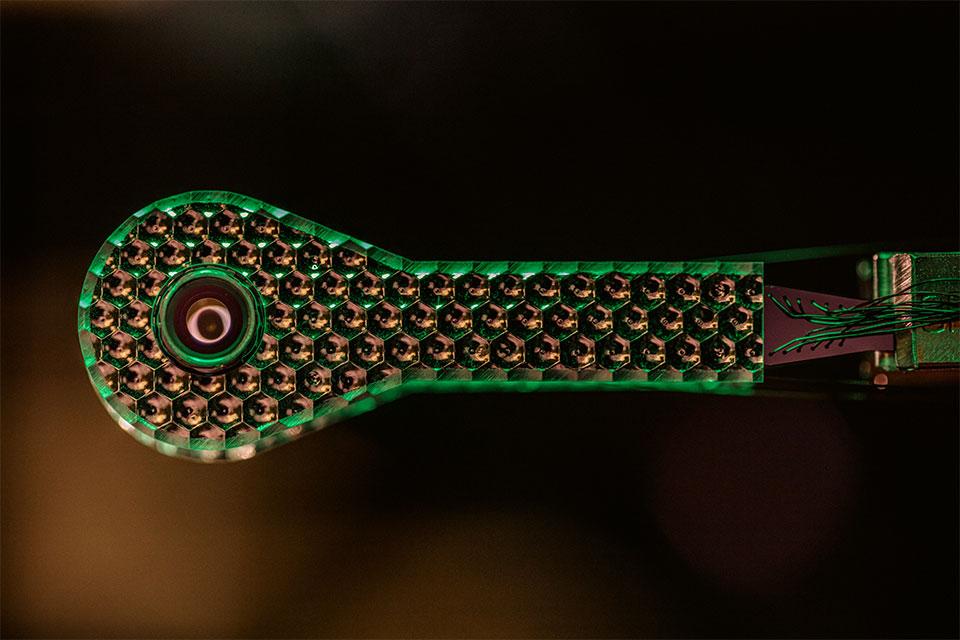Today, a major milestone has been achieved at the Lawrence Livermore National Laboratory (LLNL) in the USA. At the world's largest laser facility, the National Ignition Facility (NIF) ‘breakeven’ has been obtained for the first time meaning that the amount of energy released by fusion products exceeded the energy used to initiate the thermonuclear reactions.
The news is particularly significant to Oxford's Department of Physics, the home of the Oxford Centre for high Energy Density Science (OxCHEDS). The centre has contributed with training students and postdocs in associated research fields as well as developing new fusion concepts that could achieve much higher energy gains – a necessary requirement for a fusion power plant that may address some of today's energy and environmental issues.
The promise of fusion
For many years fusion energy has been described as the holy grail of the world's energy problems – a limitless and clean energy source that would address the ever-increasing demands free from carbon emissions. This is an aspiration that has stimulated the mind of great scientists, but the path towards an economically viable fusion power plant has been an arduous one.
The fusion approach used at NIF requires the thousand-fold compression of matter to ultra-high densities and temperatures to mimic the compressional effect of gravity in the sun, nature’s very effective nuclear fusion reactor. By irradiating and imploding a small spherical shell containing isotopes of hydrogen (deuterium and tritium) in the laboratory, the fuel’s own inertia, eg the tendency of matter to resist sudden acceleration, permits a sufficient fraction of the isotope pairs to fuse into a helium nucleus during compression and stagnation before the fuel eventually expands from the increasingly high pressure. While two hydrogen nuclei are sufficiently close, even for this short duration, the strong but short-range attractive nuclear force dominates over the tendency of ‘like charges’ to repel, allowing the nuclei to fuse.
During each fusion event, a sudden and intense release of energy occurs because the rest mass of the fusion products (a helium nucleus and a free neutron) is less than the combined masses of the deuterium and tritium ions. If these fusion reactions occur at a sufficient rate, then more energy is generated than is expended in driving the compression in the first place. This heat, if captured in a surrounding blanket, as in a conventional power plant, can drive a steam turbine that generates electric power.
A clear path
In their latest experiment, the scientists at NIF used 2.05 MJ laser input energy and measured between 3.15 MJ of energy carried out by the neutrons, implying an energy gain a little above 1.5. While this is not yet an economically viable power plant as the costs of targets are still exorbitant, and the amount of energy is yet smaller than wall plug electricity costs, the path for the future is much clearer.
Professor Justin Wark, Director of OxCHEDS, is the UK academic member of the Peer Review Panel that gives direct advice to LLNL on the NIF fusion program: 'Ignition has been a long time coming, and this is a monumental leap forward for the field. At a meeting of the panel last month in California there was widespread anticipation that the laboratory was on the brink of this significant milestone, and it is a welcome culmination of years of work by a huge number of people to attain this goal.’ Professor Peter Norreys adds, 'We are working closely with leading fusion scientists from the US – based in the University of Rochester with the Los Alamos and Lawrence Livermore National Laboratories – to reduce the drive energy requirements for fusion energy gain using novel concepts.’
Today's success rests upon the work done by many scientists in the US, UK and around the world as summarised in a recent publication in Physical Review Letters: Lawson criterion for ignition exceeded in an inertial fusion experiment. The paper lays the basis of what has been achieved in these last results; Oxford’s Professor Gregori and Professor Wark from the Department of Physics are co-authors.
New science
‘With ignition now achieved, not only has fusion energy been unlocked, but also a door has been opened to new science,’ comments Professor Gregori. ‘Inertial fusion-related research promises a four-order-of-magnitude increase in thermal neutron source brightness, thereby revolutionising neutron scattering for applications across the natural sciences, from biochemistry to life sciences. Fundamental physics of supernovae explosions and radiation dominated plasmas is now accessible.
'Our research groups in the Department of Physics have already been leading experiments at the National Ignition Facility laser to study processes related to astrophysical turbulence and magnetic field generation in galaxy clusters, and to unravel the dynamics of matter compressed under extreme pressures as found in the cores of giant planets.’
Professor Alexander Schekochihin adds: ‘A self-fuelling, burning plasma, while long sought, modelled and theorised about, has until recently remained elusive in the laboratory. It is exciting news not just to inertial fusion researchers but to fusion and plasma physicists across the field that this new plasma state can now be probed experimentally.’
Professor Gregori concludes: 'We trust that these new and important results from overseas will again drive the UK community to seek and test novel fusion research for the years to come and make controlled thermonuclear fusion a concrete reality in the near future. We also encourage the research councils and other agencies to consider increased support in this important strategic area.'
Several academics work in fusion energy in Oxford’s Department of Physics: Professor Justin Wark, Professor Gianluca Gregori, Professor Peter Norreys, Professor Sam Vinko, Dr Archie Bott, Professor Tony Bell, Professor Alexander Schekochihin and Professor Michael Barnes.
Find out more about fusion energy with this episode of the BBC's In our time where Professor Justin Wark is on the panel of experts discussing nuclear fusion.

